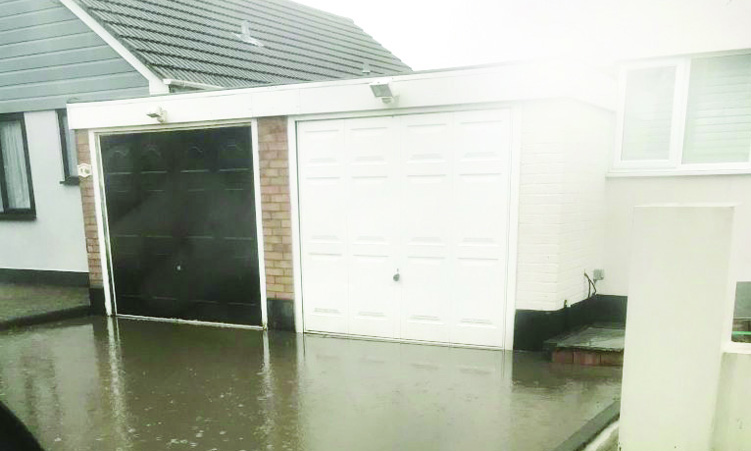As part of the association’s work, Hurilch Talla writes a monthly article for the Namibian newspaper “The Namibian”. The aim behind this is to provide information on topics relevant to everyday life. The articles thus represent an important part of the BEF’s educational work.
Read an article about humidity from April 2023 here.
Our monthly equation with Hurilch Talla
Hurilch Talla, 17.04.2023
A teacher at the Deutsche Höhere Privatschule Windhoek (DHPS) in Windhoek.

1. What does relative humidity mean?
Relative humidity (RH) is a measure of the air’s ability to hold evaporated water, expressed as a percentage.
It depends on the ambient temperature and pressure of the air, as the capacity of air to hold moisture increases with temperature.
Relative humidity can be thought of as a cup filled with water, where the size of the cup depends on the air temperature.
Think of it this way: if you have a glass that is filled with water halfway, you would say that the glass contains 50% of what it can hold.
The concept of relative humidity is pretty similar. The three glasses in the picture, with the same capacity, hold different amounts of water. Similarly, the same air can hold different amounts of water vapour, and hence, have different values of relative humidity.
Imagine that the temperature rises and the cup gets twice as big, but the total amount of water remains the same. The relative humidity decreases with increasing air temperatures.
2. Does “100% relative humidity” basically mean that air has become water?
A relative humidity of 100% means that the air cannot hold any more water vapour. It is totally saturated.
It means the air is holding the maximum amount of water it can possibly hold at the given temperature. When this occurs, it can rain. In fact, the relative humidity must be 100% where clouds are forming for it to rain. However, at ground level, where the rain lands, the relative humidity can be less than 100%.
Weather reports almost always consist of numerous references to the term ‘air humidity’ or just ‘humidity’. It is also expressed in percentages. For example, consider the following screenshot:
Notice the term ‘humidity’ in Google’s weather snippet of Swakopmund. It shows the relative humidity at Swakopmund to be 86%.
Question: Calculate the percentage of water vapour that the air at Swakopmund in the Google weather snippet can hold if the relative humidity rises to 98%. Discuss if it would be comfortable for somebody to jog along the beach under these conditions.
3. How do we protect ourselves from overheating ?
The temperature of the human body of more than 38°C is called a fever. However, body temperature also rises during physical activity. This excess heat must be dissipated to avoid organ damage or even life-threatening overheating. And that is exactly what sweating is for.
There are particularly many sweat glands on the palms, soles and forehead. You can think of it like the body’s natural air conditioning system: as soon as our body temperature rises, the sweat glands produce water.
This water evaporates. The energy from the excess body heat is used for this evaporation. This causes the body temperature to drop again. The body’s natural air conditioning system works very effectively.
Question: Discuss an effective way to water the lawn or the garden to make sure the air is not getting ‘watered’.
More Articles

Sunlight
The beneficial and deleterious effects of sunlight.
Where do the colours of the rainbow come from? Does ultraviolet radiation have deleterious effects on human skin? How important is sunscreen for children? The “Monthly Equation with Hurilch Talla” from the end of May 2023 deals with these questions.

Gradient
Ways in which mathematical gradient impacts the daily life.
What does the mathematical gradient mean? How do you evaluate a gradient? How do you use gradient for the safety of our children? The “Monthly Equation with Hurilch Talla” from the middle of May 2023 deals with these questions.
